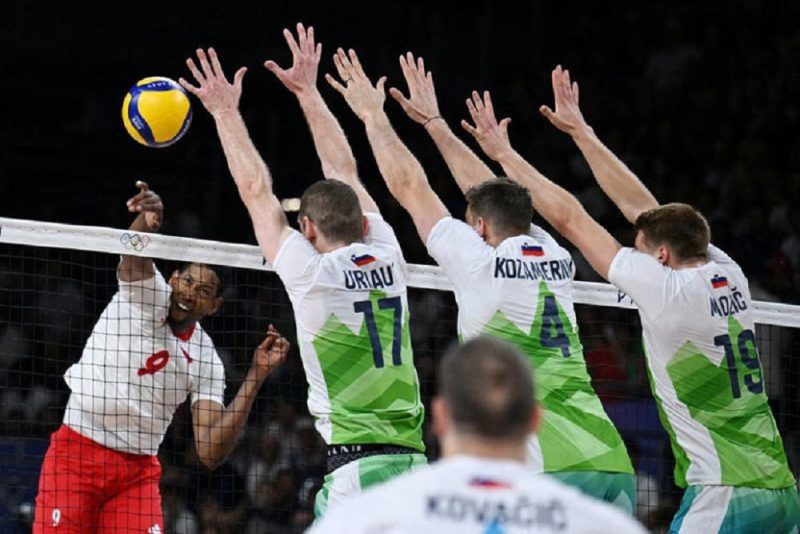
Is Volleyball an Olympic Sport? Everything You Need to Know

Is volleyball an Olympic sport? Yes, volleyball is an Olympic sport. The journey of volleyball to the Olympics began as a demonstration sport in Paris in 1924. This introduction allowed the sport to gain recognition on an international stage. Originating in the United States in 1895, the first world championships for men were held in 1949 and for women in 1952. Volleyball officially became part of the Olympic Games during the 1964 Tokyo Olympics.
Evolution of Volleyball in the Olympics
Volleyball has undergone numerous changes to enhance its appeal and competitiveness. Initially, the format remained consistent until 1998, when the Libero position was introduced to add a specialized defensive player. By 2000, the duration of matches was shortened to make the game more dynamic. Additional rule changes in 2010 included prohibiting playing the upper tape of the net and allowing the introduction of two Libero players per team.

@southtexasvolleyball | Instagram | Volleyball has undergone numerous changes to enhance its appeal and competitiveness.
Indoor Volleyball in the Olympic Sports
Indoor volleyball teams consist of six players on each side. This format has been a staple of the Olympic Games since its inclusion in 1964. The popularity of indoor volleyball has been bolstered by its beach variant, which has captured the public’s imagination with its outdoor appeal.
The Olympic indoor volleyball matches are played on a court measuring 18 meters by 9 meters. The net height is set at 2.43 meters for men and 2.24 meters for women. The game is played in a best-of-five sets format, with each team striving to win three sets to claim victory.
Beach Volleyball in the Olympic Sports
Beach volleyball, a beloved recreational activity worldwide, made its Olympic debut as an exhibition sport in Barcelona in 1992. It became a full-fledged Olympic sport in the 1996 Atlanta Games. The beach volleyball teams consist of two players each, and the game is played in a best-of-three sets format.
Qualifying for the Olympic beach volleyball tournament is based on performance in FIVB events in the 18 months preceding the Games. Each country can send a maximum of two teams, with additional spots reserved for the host nation and a wild-card entry. Since its inception, the United States and Brazil have dominated the podium. The U.S. has secured 10 medals, including six golds, while Brazil has claimed 13 medals, with three golds. However, recent FIVB World Championship results suggest that other nations are closing the gap.

Barry Werner | MSN | The beach volleyball teams consist of two players each, and the game is played in a best-of-three sets format.
Key Differences Between Indoor and Beach Volleyball
While both indoor and beach volleyball share the same fundamental rules, several key differences set them apart. Indoor volleyball is played with six players on each side in a more controlled environment. In contrast, beach volleyball involves only two players per team and is played outdoors, typically on sand.
The playing surfaces also differ significantly. Indoor volleyball courts are made of wood or synthetic materials, providing a solid and consistent playing surface. In contrast, beach volleyball courts consist of sand, adding an element of unpredictability and requiring players to adapt their movements and strategies.
The Role of the Libero
One of the notable introductions in indoor volleyball was the Libero position in 1998. This specialized defensive player wears a different colored jersey and is not allowed to serve, spike, or rotate into the front line. The Libero’s primary role is to enhance the team’s defense by receiving serves and playing in the back row, contributing significantly to the overall team strategy.
Impact on Global Volleyball Popularity
The inclusion of volleyball in the Olympic Games has significantly boosted its global popularity. It has provided a platform for athletes to showcase their skills and for countries to invest in developing competitive teams. This exposure has led to an increase in participation and interest at all levels, from amateur to professional.
The Olympic Games have also played a crucial role in the evolution of the sport, with rule changes and innovations introduced to make the game more engaging for both players and spectators. The excitement and energy of Olympic volleyball, whether indoor or beach, continue to captivate audiences worldwide.
More in Latest News
-
`
Hong Kong Hails Saudi Super Cup and Cultural Treasures in Historic Tourism Push
Hong Kong is turning up the heat this August, as Saudi Arabia brings a double dose of energy to the city:...
August 13, 2025 -
`
Floyd “Money” Mayweather’s Flight Company Sued for $136k in Unpaid Fuel
Floyd Mayweather is in the ring again, but this time it is a legal one. His private jet company, TBE Aviation...
August 6, 2025 -
`
World’s Oldest Surviving Basketball Court May Help Boost Small Town Tourism
Basketball may be a global sport. But its roots run deeper in Canada than most people think. In the small border...
July 30, 2025 -
`
China Builds 50m-Tall Inflatable Dome to Reduce Construction Pollution
Cities deal with construction dust and noise daily. But a new dome in Jinan, in eastern China’s Shandong province, is changing...
July 23, 2025 -
`
Ligue 1 Adopts ‘Simplified’ Yellow Card Suspension System for Season 2025/26
Starting in the 2025/26 season, Ligue 1 is changing the yellow card suspension rule, and it is about time. The old...
July 17, 2025 -
`
Key Highlights From UFC 317 (June 26 – 29, 2025)
UFC 317 took over Las Vegas from June 26 to 29, 2025, and it didn’t waste a second. Fights were fast,...
July 9, 2025 -
`
Who Invented Basketball? Here’s All You Need to Know
Basketball didn’t just show up one day. It had to be invented. The story most people know starts in 1891 with...
July 3, 2025 -
`
What to Do (And What to Avoid) Before a Cruise
A cruise vacation is an incredible escape from the daily grind, offering relaxation, adventure, and the chance to explore new places....
June 25, 2025 -
`
Big Ten Basketball Power Rankings 2025. Can You Guess Who’s #1?
Big Ten basketball is once again the loudest, toughest, and deepest show in college hoops. The 2024-25 season was stacked with...
June 18, 2025















You must be logged in to post a comment Login